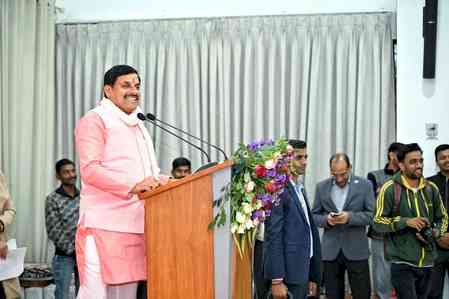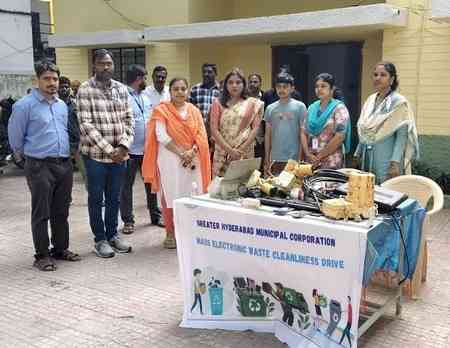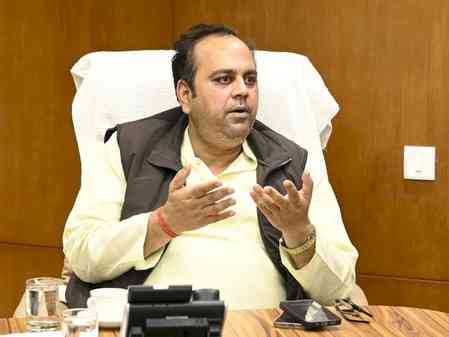Will PPP model for manufacture and use of satellites be successful? Doubts persist
With the Indian National Space Promotion and Authorisation Centre (IN-SPACe) mooting public-private-partnership (PPP) model for earth observation satellites, the question that arises is the current market size and the government’s satellite procurement plans, say experts.

Venkatachari Jagannathan
Chennai, Aug 6 (IANS) With the Indian National Space Promotion and Authorisation Centre (IN-SPACe) mooting public-private-partnership (PPP) model for earth observation satellites, the question that arises is the current market size and the government’s satellite procurement plans, say experts.
They also wondered whether the PPP model would work as the government itself is advocating market-driven development which is sustainable in the long run.
In a consultation paper on making India a geospatial hub, IN-SPACe – the regulator for private space sector players- said the PPP model could be followed whereby the private sector can build, launch and maintain earth observation satellites constellation with the Indian government being an assured customer and a funder.
Earth observation satellites are the ones that take pictures of a specified portion of the earth and send it back for infrastructure planning, achieving sustainable goals, e-governance, weather prediction, climate monitoring, disaster preparedness & mitigation and others.
The consultation paper is, however, silent on the current revenue generated from the satellite images or the number of Indian government departments willing to invest in satellites.
One of the views on the consultation paper was without knowing the government plans how can the industry give its views on the PPP model.
"The consultation paper is seeking industry’s views. It is too early to talk about revenue from the government or its satellite procurement plans," IN-SPACe Chairman Dr. Pawan Goenka told IANS.
According to him, inputs like the government plans will be taken into consideration as the process progresses.
India’s geospatial economy is expected to cross Rs 63,000 crore by 2025, growing at a rate of 12.8 per cent, and to provide employment to more than 10 lakh people, mainly through geospatial startups, IN-SPACe said.
To meet the additional requirements of the data, it is proposed to build, launch and maintain the satellite constellation, through private sector participation.
"As Indian space industry is at its early stages, Government of India may become an assured customer for the data, acquired through these new constellations. Public Private Partnership (PPP) model may be followed, for funding, where the NGE (non-government enterprise) participating in building EO (earth observation) Constellation & the user Government departments may jointly fund the activity. The participating industry shall clearly mention their revenue generation model," IN-SPACe said in the consultation paper.
According to it, the overall requirements are prioritised and split into three major categories (a) Very high-resolution 30cm or better data (b) High resolution 1 metre data and (c) stereo data of 1 metre resolution.
Reacting to the PPP model, Department of Space's commercial arm Antrix Corporation's former Chairman and Managing Director Rakesh Sashibhushan told IANS: "Not sure whether this will work when the government itself is advocating market-driven development which is sustainable in the long run. PPP models are for areas where the private sector can get returns by investing in a government run system."
Queried about the revenue from Indian government departments that use the satellite data, he said: "Right question which no one will be able to answer. Though India fares among world space powers, the ground reality is very different. India has not integrated satellite services into the mainstream governance or revenue activities in spite of ISRO's capabilities and performance. This is not to criticise anyone, but it is the outcome of the system we were practicing."
A couple of years back, Prime Minister Narendra Modi had wanted all the Central government departments to use the satellite data wherever possible. After that, nothing much was heard. He had said India could have solved the telecom connectivity issues to islands like the Andamans, Lakshadweep, North East sector and also in Jammu and Kashmir with satellite communications.
Instead, BSNL laid undersea cable at a huge cost to Andamans and another undersea cable is planned for Lakshadweep.
"Satcom could have solved the issue easily, cost effectively and with better coverage. I remember having put up a proposal to connect Andamans through a procured MEO Satcom service which was promptly refused! These sorts of narrow- mindedness at the highest level resulted in the current plight," Sashibhushan remarked.
The other issue is the future of satellite manufacturing facilities created by the ISRO if government departments go for PPP model and invest in building satellites?
So why not transfer all the manufacturing assets to NewSpace India Ltd – the commercial arm of the Department of Space - and ISRO focus only on space research and development (R&D).
In the atomic power field, the Bhabha Atomic Research Centre (BARC) does the research and the Nuclear Power Corporation of India Ltd (NPCIL) builds atomic power stations and sells power.
A senior ISRO official preferring anonymity told IANS: "There are no satellite manufacturing assets created in ISRO. The component manufacturing takes place in the industry. Only the final assembly and testing takes place in ISRO. This expertise is still not there in industry. The model of BARC is not applicable here.
"The facilities in ISRO are created for research, development and testing. Manufacturing happens only in critical areas where no one is ready to invest."
The official added that ISRO has clean rooms and testing facilities as part of the infrastructure, but clean rooms are available in private and most of the testing too.
"There are high value testing facilities in ISRO which can be duplicated. Those will be made available to private companies. ISRO satellite team still has good research and development work in satellites, as all the private satellite builders are going to concentrate on revenue generating models in the commercial sector. ISRO will focus on scientific missions, strategic needs and national missions such as climate, weather, disaster, and new developments," the official said.
Sashibhushan said: "Neither ISRO or the Indian private sector has the technology for commercial (production oriented & cost-effective) manufacture of satellites. ISRO's facilities are set-up in an R&D manner and are not streamlined for commercial production. ISRO's processes are also very much in R&D mode and no attempt has been made for cost optimisation. So, if the private sector manufactures using ISRO facilities, they have to follow a similar system since they also don't have the complete know-how."
"Owing to this conflict of interests, the production may not be as one would expect and the real costs may be very high. Please note that ISRO makes around 4-5 satellites per year. SpaceX makes 1-2 Starlink satellites per shift," Sashibhushan said.
According to him, ISRO satellite manufacturing facilities will continue in R&D mode since the government has made it clear that they won't fund commercial satellites. In the nuclear energy sector, what is handed over to NPCIL is the generation of energy.
(Venkatachari Jagannathan can be reached at [email protected])


 IANS
IANS 










